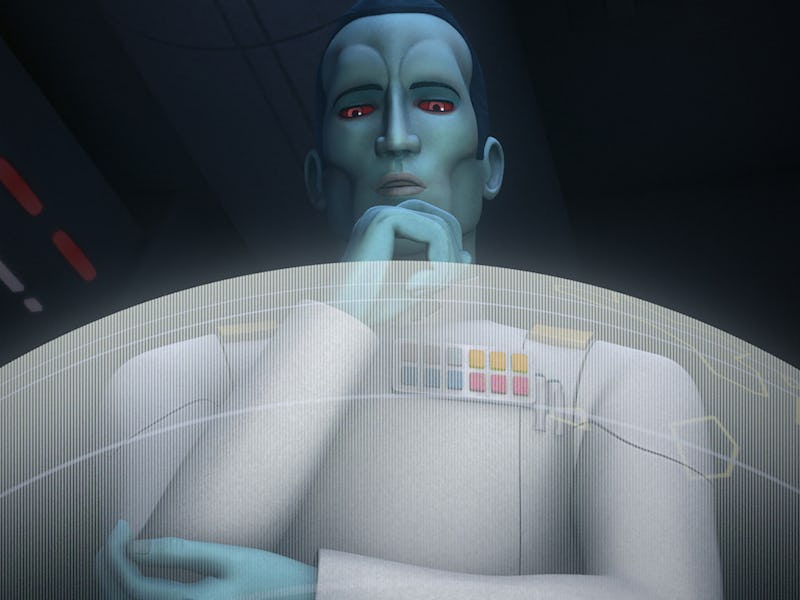The infamous Imperial villain Grand Admiral Thrawn has finally made his entrance into the new Star Wars canon on Rebels, and he’s rocking an intellectual style reminiscent of that great detective, Mr. Sherlock Holmes. If the Thrawn of the Timothy Zahn novels was an evil art critic, then this new Thrawn is easily Bad-Boy-Space-Sherlock.
The Season 3 premier of Star Wars Rebels debuted Thrawn a little less dramatically than we’d anticipated, but not at all disappointing. Essentially, if the Imperial Moffs, Generals, and Admirals are ruthless military tacticians, Thrawn is more of an amoral detective, connecting strands together among the various things he’s noticing throughout the galaxy rather than focusing on one military target at a time. In an early scene, he figures out the exact connection between the Rebels freeing the pirate Hondo Ohnaka and a base of old Y-Wings which has minimal protection. “Taken separately they may seem unrelated…” Thrawn muses.
Where's my pipe?
Threading together details which seem unrelated is a classic Sherlock Holmes move. The Holmesian axiom Thrawn is evilly evoking here is “you see, but you do not observe,” meaning the bigger picture is often made clearer by noticing weird details and minutiae. Sherlock Holmes and his arch-nemesis Professor Moriarty were both masters of this kind deductive — and sometimes inductive— reasoning. The newly rebooted version of Grand Admiral Thrawn in Star Wars Rebels is the same. Cunningly, he even allows the Rebels to escape capture at the end of this season’s first episode, “Steps into Shadow.” Why? He needs them to lead him to more clues about the larger structure of the Rebellion.
Being strong with the Force is ussually the best way to gain the upper hand in Star Wars, but possessing the brainy superpowers of a Sherlock Holmes-tier mind? Even better.
